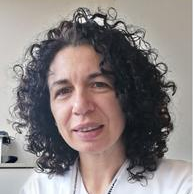Host-Pathogen Interactions during Persistent Bacterial Infections
A special issue of International Journal of Molecular Sciences (ISSN 1422-0067). This special issue belongs to the section "Molecular Microbiology".
Deadline for manuscript submissions: closed (25 December 2023) | Viewed by 9534
Special Issue Editors
Interests: host-pathogen interaction; bacterial interaction; chronic infections; dormant bacterial phenotype
Special Issues, Collections and Topics in MDPI journals
Interests: toxin-mediated effects in bacterial infections and viral-bacterial co-infections; persistence strategies of pathogens; infection models and testing of therapy strategies; diagnostic microbiology
Special Issues, Collections and Topics in MDPI journals
Special Issue Information
Dear Colleagues,
One of the main bacterial strategies during persistence is to manipulate the host response to promote microbial survival. Bacterial adaptation is frequently used by pathogens upon the transition from the free-living state to an intracellular environment. In this scenario, bacterial pathogens regulate their virulence factors, phenotype and metabolic pathways to persist silently for long periods of time. The microbes are able to establish a niche to avoid their eradication despite antimicrobials and immune response. However, the persisting pathogens can escape from their niche, regain full virulence and develop a new episode of an infection. Thus, the study of bacterial adaptation to the host plays an important role in the progress of disease from acute to chronic and relapse infections.
On the other hand, the host competes with bacteria for nutrients and survival. Thus, host cells adapt their metabolic pathways to activate the bacterial clearance. This type of interaction between host and pathogen determines the outcome of the infection.
This Special Issue is dedicated to understanding the mechanisms that take place during the bacterial switch from an aggressive virulent to a silent persisting phenotype. Furthermore, changes induced by pathogens on host cells that promote bacterial persistence should be taken into consideration. Reviews and research articles focusing on understanding the interchange between the different phenotypes by multiple approaches that include molecular and cell biology tools, advanced imaging tools and -omics techniques are welcome.
Dr. Lorena Tuchscherr
Prof. Dr. Bettina Löffler
Guest Editors
Manuscript Submission Information
Manuscripts should be submitted online at www.mdpi.com by registering and logging in to this website. Once you are registered, click here to go to the submission form. Manuscripts can be submitted until the deadline. All submissions that pass pre-check are peer-reviewed. Accepted papers will be published continuously in the journal (as soon as accepted) and will be listed together on the special issue website. Research articles, review articles as well as short communications are invited. For planned papers, a title and short abstract (about 100 words) can be sent to the Editorial Office for announcement on this website.
Submitted manuscripts should not have been published previously, nor be under consideration for publication elsewhere (except conference proceedings papers). All manuscripts are thoroughly refereed through a single-blind peer-review process. A guide for authors and other relevant information for submission of manuscripts is available on the Instructions for Authors page. International Journal of Molecular Sciences is an international peer-reviewed open access semimonthly journal published by MDPI.
Please visit the Instructions for Authors page before submitting a manuscript. There is an Article Processing Charge (APC) for publication in this open access journal. For details about the APC please see here. Submitted papers should be well formatted and use good English. Authors may use MDPI's English editing service prior to publication or during author revisions.
Keywords
- bacteria
- intracellular adaptation
- metabolic adaptation
- metabolic host reprogramming
- host–pathogen interaction
- chronic infections
- regulation of virulence







